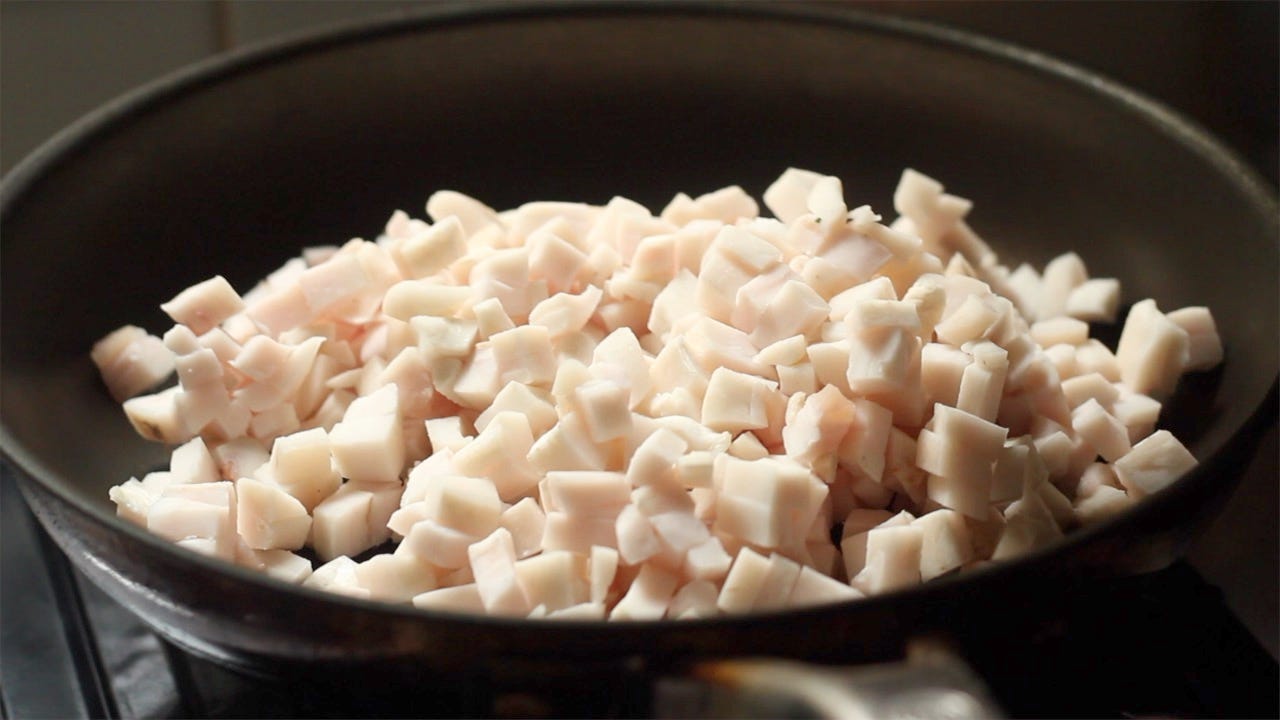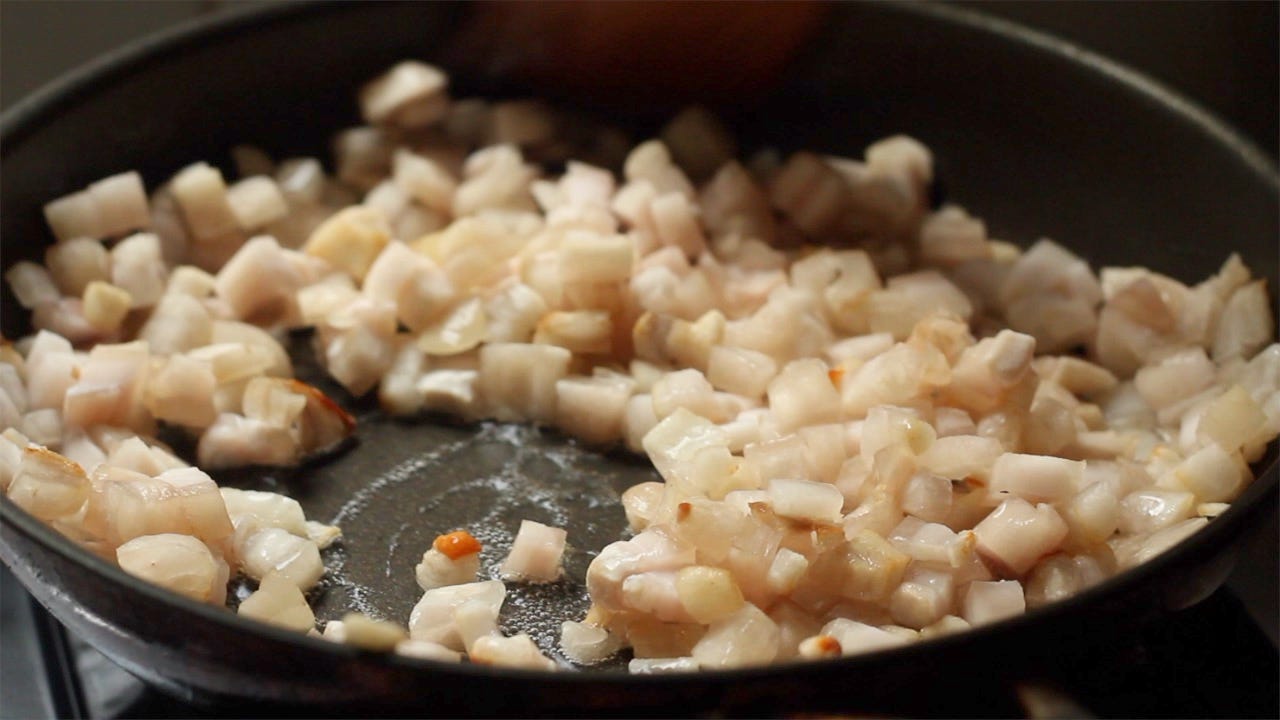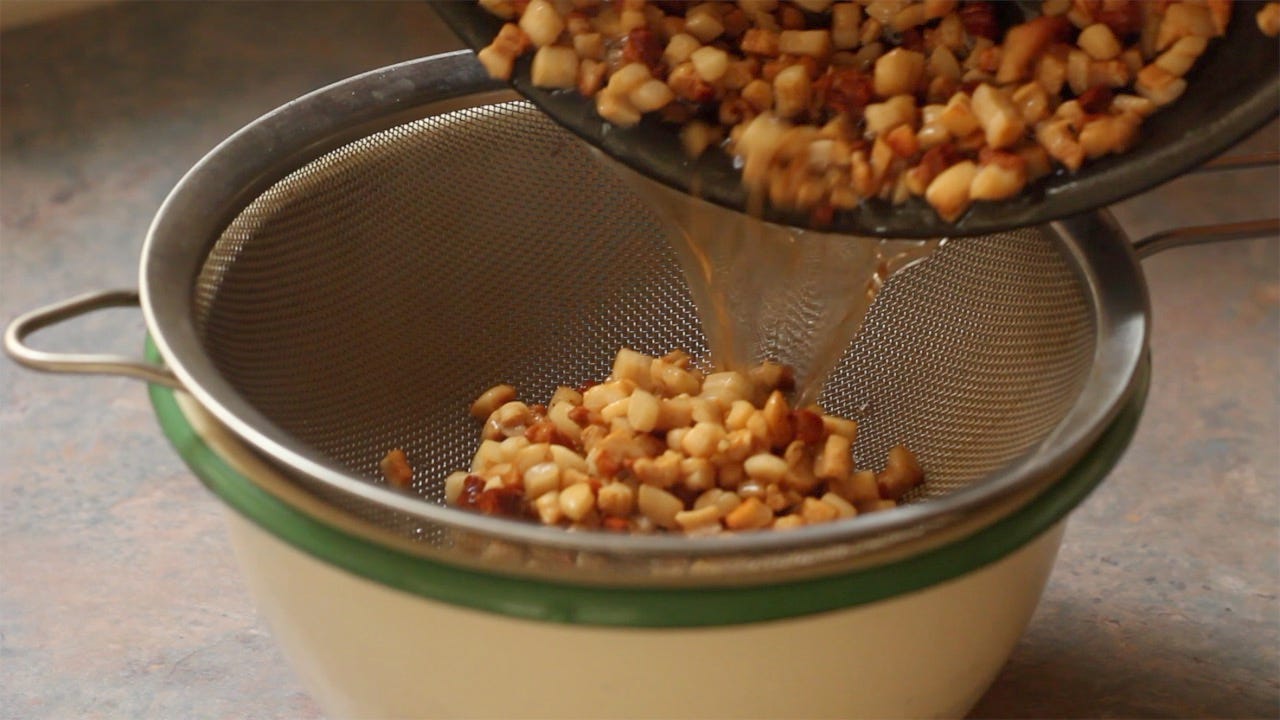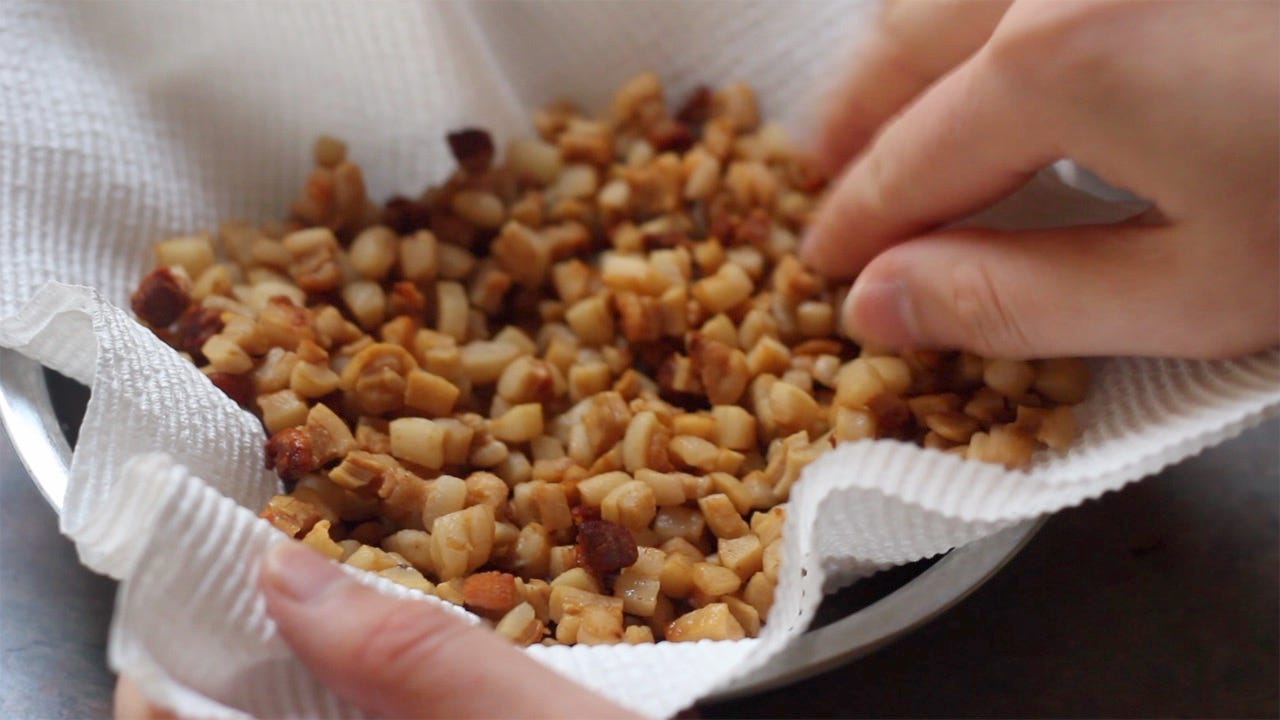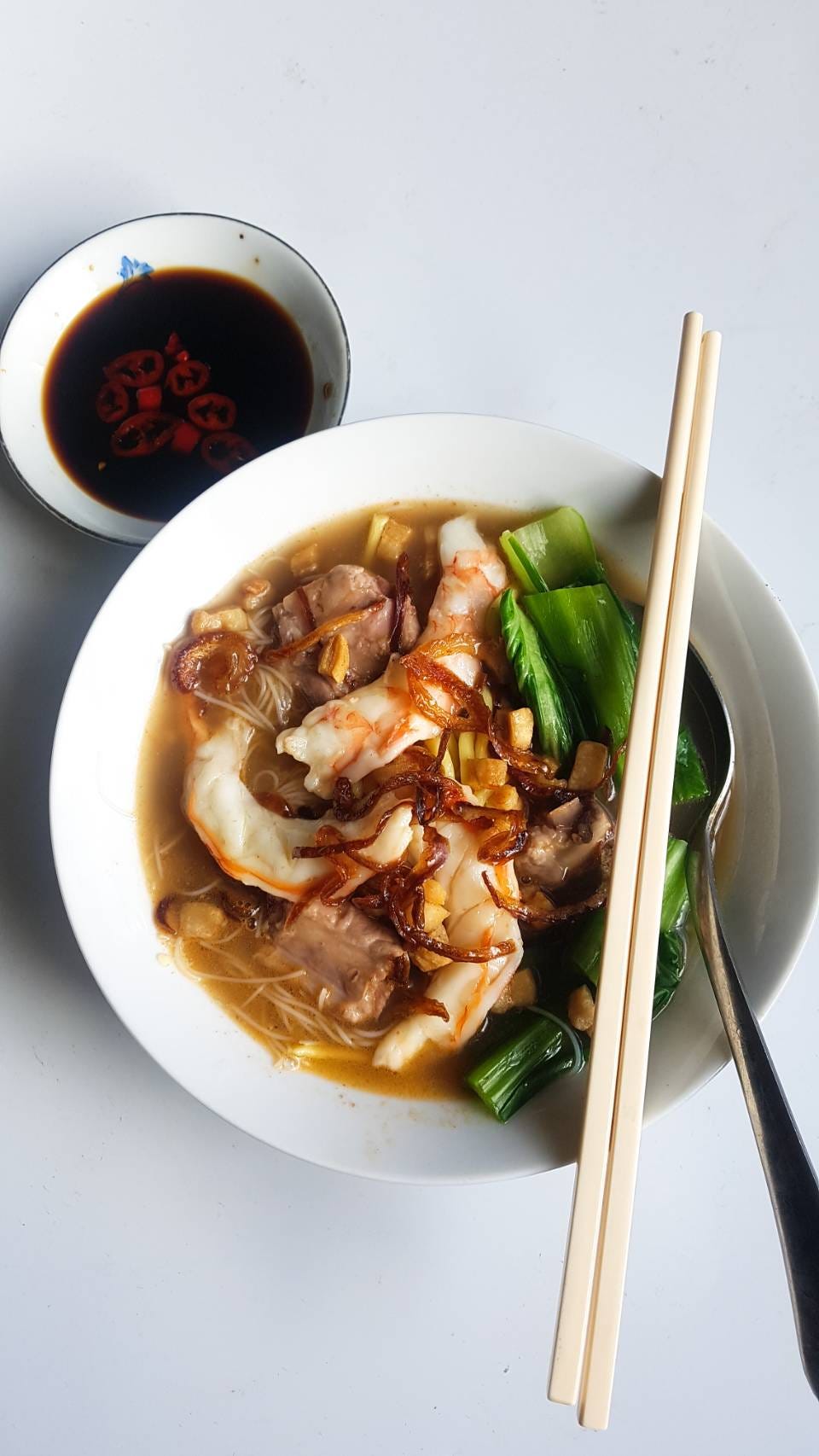On lard
A question that I get often is: how do you render lard? You might find yourself reaching for the foil wrapped cube from your supermarket if you live in a Western country like me, or the chilled fat in takeaways from Phoon Huat in Singapore, but rendering lard yourself is crucial in cooking Singapore classics like prawn noodle soup, Hokkien mee, bak chor mee, char kway teow and more. Apart from the fragrant rendered pork fat used in the cooking process, the crispy ‘croutons’ scattered over the top at the end are key to the enjoyment of these dishes.
Start with pork fat. You probably won’t be able to find this at the supermarket, so make a trip to your (wet) market, and ask your butcher for it. It is extremely inexpensive because it is commonly a waste product. It comes in slabs like this:
It’s fine if you see some bits of meat still left on the fat (like the picture above). Cut the fat as neatly as you can into tiny cubes. This is imperative because tiny cubes allow for more efficient rendering of the fat, and also allows the fat to crisp up evenly. It also makes for a beautiful appearance, especially important when you’re using it as garnish.
Place the pork fat in a dry pan and set over high heat, stirring occasionally.
Very quickly, fat would start rendering the cubes would begin to brown. At this stage, you want to watch the crispy bits like a hawk.
Just like when you’re deep-frying shallots or onions, you always want to pull the pan from the stove when the fried item is a shade lighter than what you’d like, roughly this colour below (the darker bits are actually meat that’s on the pork fat). At this stage, you’ll notice that the aroma of the fat turns a little smoky.
Strain the contents of the pan to separate the rendered fat from the crispy bits.
Transfer the crispy bits to a paper towel-lined dish to drain. Once cool, these can be stored in a jar or airtight container. I usually store the rendered fat in the fridge.
Some people advise adding water to the rendering fat to keep it from burning. I don’t like this method because of how messy it could potentially be with the oil/water mixture sputtering towards the end of rendering. This advice is usually from Western sources that are only interested in the rendered fat, so they don’t usually cut up the pork fat into tiny pieces. But, as long as the pork fat is diced finely, you would have no issue with the fat burning if you stir it constantly.
Apart from using the rendered fat as cooking oil, you could use it in curry puffs, Chinese pastries like mooncakes, or orh nee. Flour tortillas using lard are my favourite too! For the crispy lard, you can garnish almost any dish with them, like this prawn noodle soup I recently cooked.
Prawn mee/ prawn noodle soup/ hae mee
This is a Singaporean hawker classic made of Hokkien mee (yellow noodles) in a rich stock made from prawn heads and shells and pork bones. Popular toppings for the noodles include pig tails, pork ribs, pig intestines, strips of lean pork, prawns, beansprouts, and vegetables. It is also traditionally topped with lard and crispy shallots. The broth is really the heart of this dish, and there are as many variations as there are prawn noodle hawkers. Some boost the broth with dried seafood such as dried shrimps and scallops, others use blue swimmer crabs. Some vendors are also said to enrich the colour of the stock with caramelized sugar. This recipe below is quite time- and labour-intensive, I have to admit. But if you live overseas like me, it is well worth dedicating a weekend to making this.
Serves 4-6





